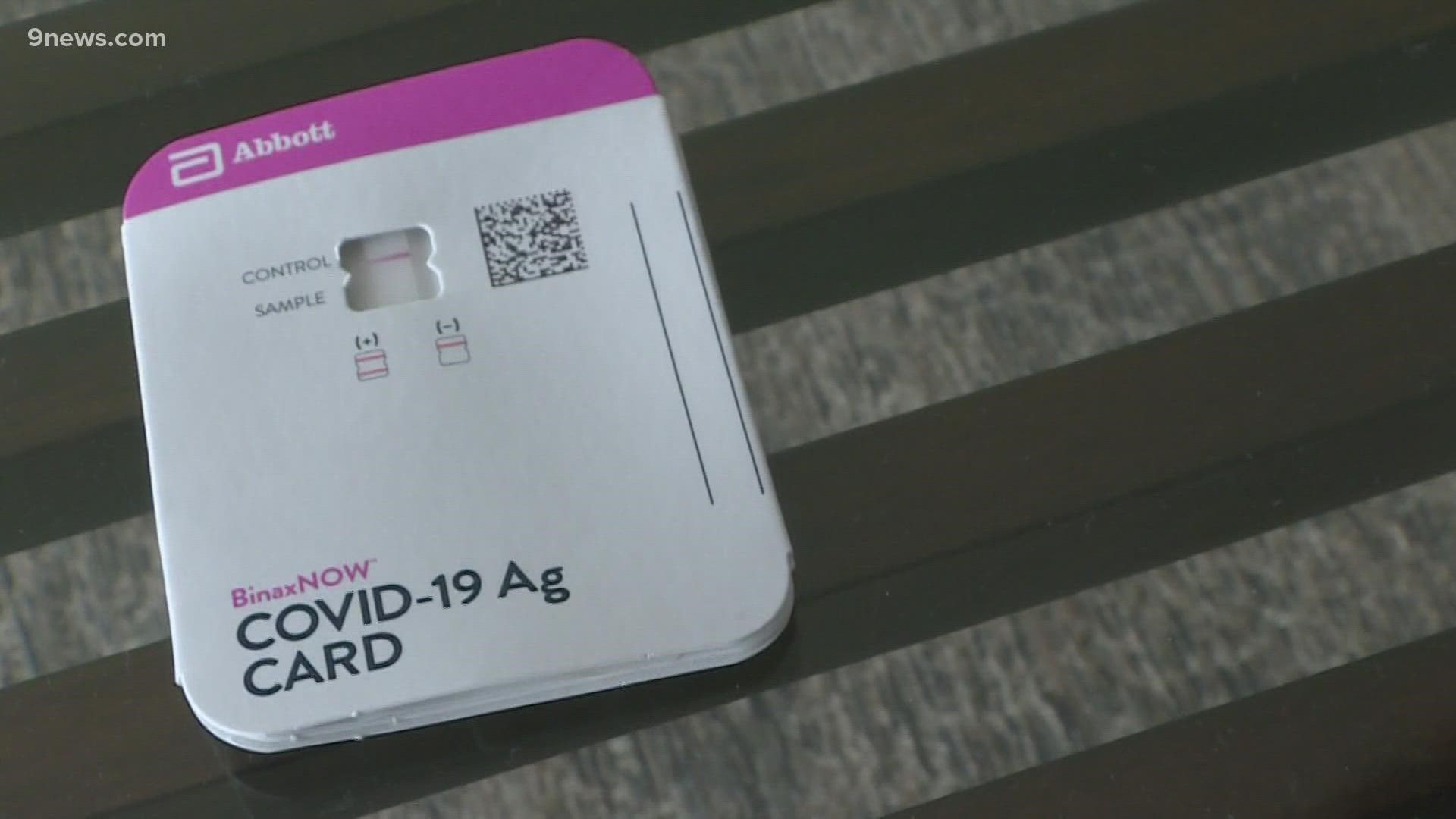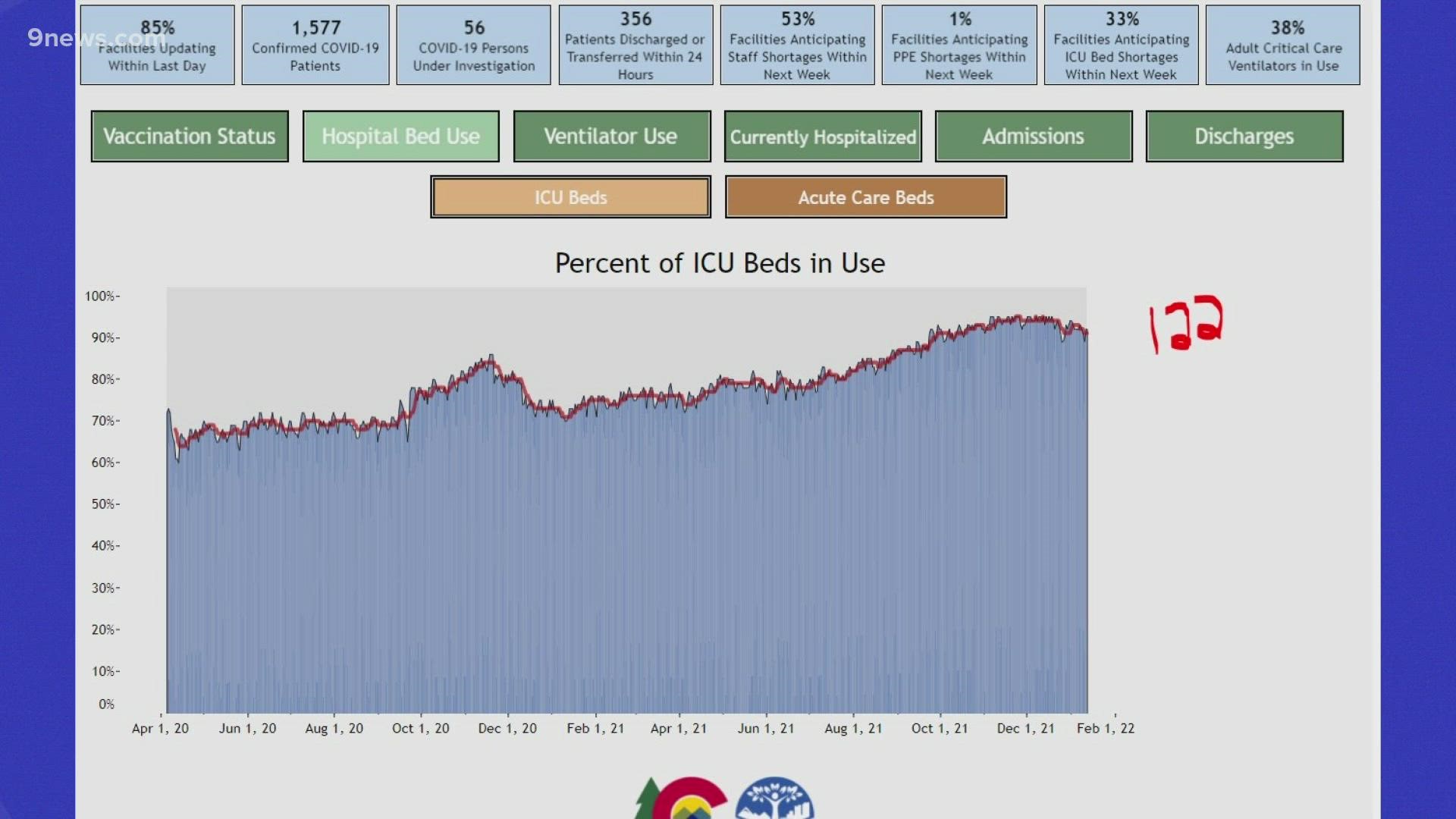DENVER — The tests keep piling up. More are coming back positive.
"Somewhere between one in 10 and one in 15 Coloradoans is actively infectious with COVID-19 right now," said Dr. Rachel Herlihy, Colorado's state epidemiologist.
Countless people have tested positive with at-home tests. Yes, the number is countless because there are likely a great deal of people not reporting results to the state. In the past month, 3,950 people reported their at-home test results. That’s less than a third of the average number of people who tested positive at a testing site every day this week.
"We know that there’s been substantial underreporting of the true number of cases," said Herlihy. "This is why we rely on multiple data sources for us to have good situational awareness and to understand fully what’s happening with transmission in the state."
9NEWS wanted to know how the lack of reporting from at-home tests impacts her decisions on which direction the state should go when it comes to COVID. Spoiler alert, when there are already 13,000 positive tests a day, we already know the virus is everywhere.
"Honestly, the most important thing is for individuals to act on those test results so that we don’t have that next generation of cases occurring," said Herlihy.
Beyond reporting the data, at-home tests give people an opportunity to isolate before infecting others. The positivity rate and number of new cases is already insanely high. At-home tests main purpose isn’t for data. They’re used to let people know when to stay home.
Even if you do report a positive at-home test, those positive cases from at-home tests are considered “suspected cases." Because of that, they are not used in the graphs and charts Colorado shows, detailing the number of cases and positivity rate in the state.
"I think at this point what people really need to understand is that prevalence of this infection is really high in our community," said Herlihy.
So what about contact tracing? When this many people are getting infected, the state can’t keep up, even if you are reporting your results.
"The volume of cases is unprecedented that we’re seeing right now, so we have had to prioritize case investigation and contact tracing activities to higher risk settings," said Herlihy.
The changing nature of the pandemic and not knowing exactly how many cases there are right now makes it hard to keep accurate models for how the cases may rise and fall over the coming weeks. Jon Samet is the dean of the Colorado School of Public Health. He has worked to predict how the virus will spread over the course of the pandemic.
"When the situation is so dynamic and changing so quickly and somewhat unpredictably, the modeling becomes less useful," said Samet.
Both Samet and Herlihy are cautiously optimistic the Omicron wave of the virus may peak in Colorado sometime in the next week or two.
"We first saw an increase in some of our mountain resort communities, Summit County and Eagle County. Those are actually some of the counties we’re seeing some of a leveling off in cases. Their case counts are really high right now, but they’re not growing to the same level that they were a few days ago," said Herlihy. "We’re thinking that in the next one to two weeks, we could get to that place where we see a leveling out and ideally a decline in cases and hospitalizations."
WATCH: There will be a shift in how we track COVID-19 for now; Here's why


